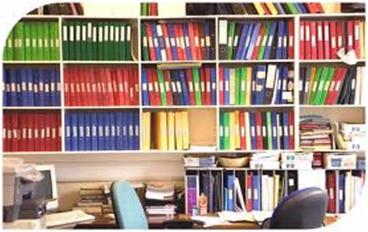Small business owners, specifically those who have set up a home office usually have limited working space. Combine the fact with an unsorted pile of papers and you will end up in complete chaos. It is essential for entrepreneurs to have their small business filing system created at the earliest and maintain it before a large amount of paper work piles up.
Initially, setting up filing systems for small business may seem like a tedious and insignificant task, but it is neither. Having a proper filing system can save you a lot of valuable time when you are looking for any particular document and help you become more organized and productive. Filing system for home office is particularly important due to very limited work space and no excessive storage area available.
7 Steps to Creating a Small Business Filing System that Works
Here are a few simple steps that can help you to set up an effective filing system making record keeping for small business an easy task to carry out:
1.Sort Out Documents
You can start by collecting all your documentation and sorting them into major categories like accounts receivables, payables, information, legal etc. Separate the papers carefully and keep them in separate plastic trays for now. Creating small business filing system categories is a very critical part and needs to be done after careful assessment of your needs.
2.Separate Working and Archived Files
Now from each category, further divide the papers into working files and archived files. Archived files are those which no longer need to be reviewed and are permanent files to be stored. Working files can be anything related to your current projects or regular procedures.
Bothe types of files should be recorded separately so that you only have to retrieve working files for your current paperwork needs.
3.Label the Files
Now sub-categorize the files into different categories. For example, your accounts payable can be further categorized into Rent, Utilities, Suppliers’ Payments etc and your information data can be categorized into Prospects, Marketing Campaigns and Financial Statements etc. Now label different files accordingly and make sure the labels are clearly visible and prominent enough to be viewed easily.
4.Choose Location for Filing Cabinet
Now choose a suitable location to fix a filing cabinet. Make sure that the filing cabinet can be easily reached from your office desk. If you have more than one employee, you have to determine who will require access to the cabinet or whether to install the cabinet at a central position.
The available office space is also required to be determined before selecting a size for your filing cabinet. If you need to maintain security, you will require cabinets with proper locks. File cabinets can be lateral, vertical or open-shelf. Also determine the type of fixture you would require to hold the files.
5.Arrange the Files
Now you need to file the paperwork into the labelled files. Filing can be done in different ways:
- Alphabetic – arranging according to names of clients or intermediaries
- Numeric – assigning numbers to different document are arranging through these number. An index is essential for such type of filing.
- Geographic – arranging through geographic locations if you have a global or international business
- Subject – arranging through a keyword or key phrase
- Chronological – arranging through time-period
You can also use separate ways for different categories. For example, you can file the utility bills chronologically while you can file the information about new prospects in an alphabetical order.
You can also combine two or more ways, for example you can file the information about your clients alphabetically and further file their transaction details chronologically.
You can also colour code files for different categories such as all you information files can be coded a single colour while all your accounts payable files can be coded in some other colour.
6.Set Up a Retention Schedule
You need to update your filing system regularly. Once a project is completed you will be required to transfer documentation from working files to archived files accordingly.
It is also necessary to determine how long to store a particular document and when to discard it. For example, you may determine that any utility bill dating back to more than a year is of no use. When discarding your documents, make sure you destroy them using a shredder and not just throw them away.
7.Special Files
There may be some files that won’t fit into any other file like different catalogues, take-away menus, maps and certain other miscellaneous papers. Create an extra file or cabinet to store all such files or get separate king of fixtures in your filing cabinet.
Summary
Small business document management is an essential part of planning a small business and lack of doing so can lead to major disorganization chaos. Often one single misplaced document can be a lot more trouble than it is worth.
It is necessary for small business owners to sort out and manage their paperwork from very first day in a proper well-defined filing system to save a lot of time and effort after it turns into an unmanageable pile.
Speak Your Mind